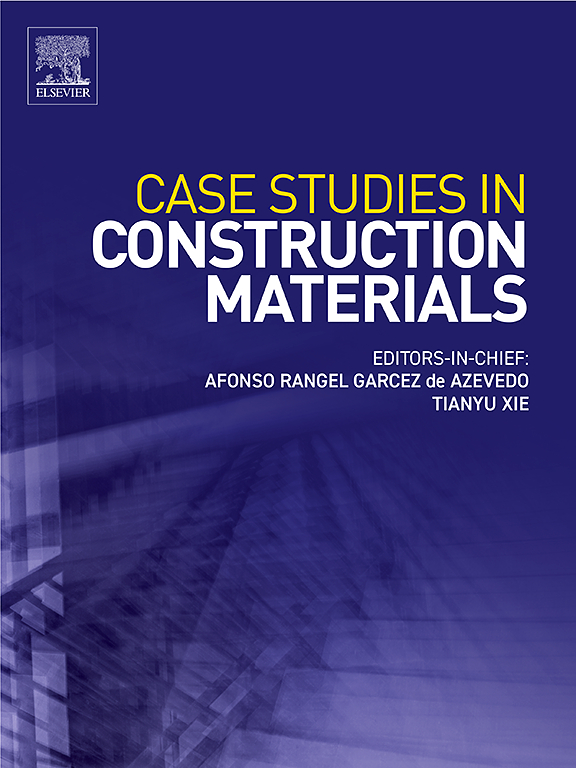Effect of sugarcane bagasse ash on eco-friendly blended cement production: Physicochemical, mechanical, and microstructure properties
IF 6.5
2区 工程技术
Q1 CONSTRUCTION & BUILDING TECHNOLOGY
引用次数: 0
Abstract
The study presents the effect of different mixing proportions of locally generated SCBA grown in African tropical areas of Uganda on cement's physicochemical, mechanical, and microstructural properties as supplementary cementitious material alongside clinker. SCBA was pretreated by: (i) calcination plus grinding and (ii) grinding only. Blended cement was made using 7 % - 35 % SCBA and 4 % gypsum by weight of cement and then characterized. Processing locally generated SCBA increased the pozzolanic oxides’ content (SiO2+Al2O3+Fe2O3) to about 92.85 %. Use of up to 28 % SCBA (65 % clinker proportion) produced cement with satisfactory setting times, soundness, normal consistency, chemical requirements, and cement strength as per ASTM C595 for type P. The optimum mix was 14 % SCBA with a strength improvement of 27.7 % at 28 days of curing compared to the control. Thermal, chemical bond, and microstructure analysis confirmed that pre-treated SCBA contributes SiO2 which reacts with the portlandite produced in clinker hydration to form calcium silicate hydrate (C-S-H) gels for improved performance properties. Therefore, the study findings suggest that the use of pre-treated locally generated SCBA could lower the clinker-to-cement ratio of OPC from 0.95 to 0.65 and the heavy reliance on expensive imported clinker in producing blended cement.
蔗渣灰对环保水泥生产的影响:理化、力学和微观结构特性
本研究展示了生长在乌干达非洲热带地区的当地生产的SCBA的不同混合比例对水泥的物理化学、机械和微观结构性能的影响,作为熟料的补充胶凝材料。SCBA的预处理分别为:(i)煅烧加研磨和(ii)仅研磨。采用水泥质量比为7 % ~ 35 %的SCBA和4 %的石膏配制水泥,并对其进行表征。处理本地生成的SCBA使火山灰氧化物(SiO2+Al2O3+Fe2O3)含量达到92.85 %左右。使用高达28% % SCBA(65 %熟料比例)生产的水泥具有令人满意的凝结时间、稳定期、正常稠度、化学要求和水泥强度,符合ASTM C595的p型标准。与对照相比,最佳掺量为14% % SCBA,在养护28天时强度提高27.7% %。热、化学键和微观结构分析证实,经过预处理的SCBA提供了SiO2, SiO2与熟料水化过程中产生的波特兰石反应形成水化硅酸钙(C-S-H)凝胶,从而改善了性能。因此,研究结果表明,使用经过预处理的本地产SCBA可以将OPC的熟料灰比从0.95降低到0.65,并且在生产混合水泥时严重依赖昂贵的进口熟料。
本文章由计算机程序翻译,如有差异,请以英文原文为准。
求助全文
约1分钟内获得全文
求助全文
来源期刊

Case Studies in Construction Materials
Multiple-
CiteScore
7.60
自引率
19.40%
发文量
842
审稿时长
63 days
期刊介绍:
Case Studies in Construction Materials provides a forum for the rapid publication of short, structured Case Studies on construction materials. In addition, the journal also publishes related Short Communications, Full length research article and Comprehensive review papers (by invitation).
The journal will provide an essential compendium of case studies for practicing engineers, designers, researchers and other practitioners who are interested in all aspects construction materials. The journal will publish new and novel case studies, but will also provide a forum for the publication of high quality descriptions of classic construction material problems and solutions.
 求助内容:
求助内容: 应助结果提醒方式:
应助结果提醒方式:


